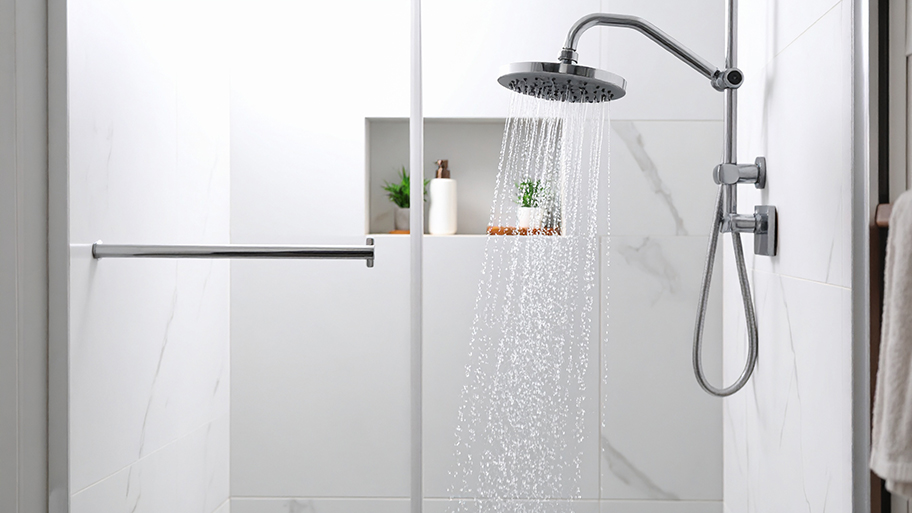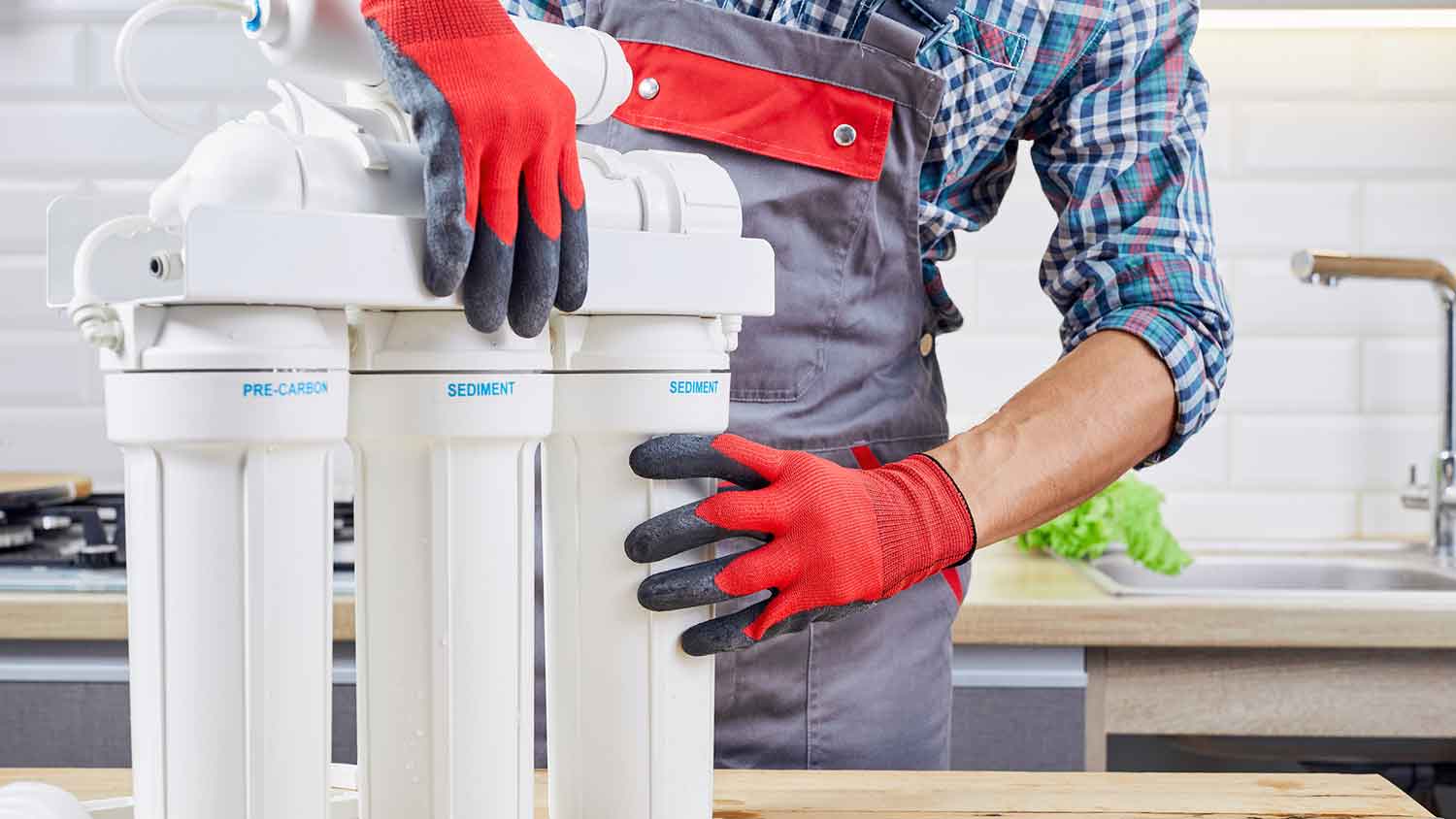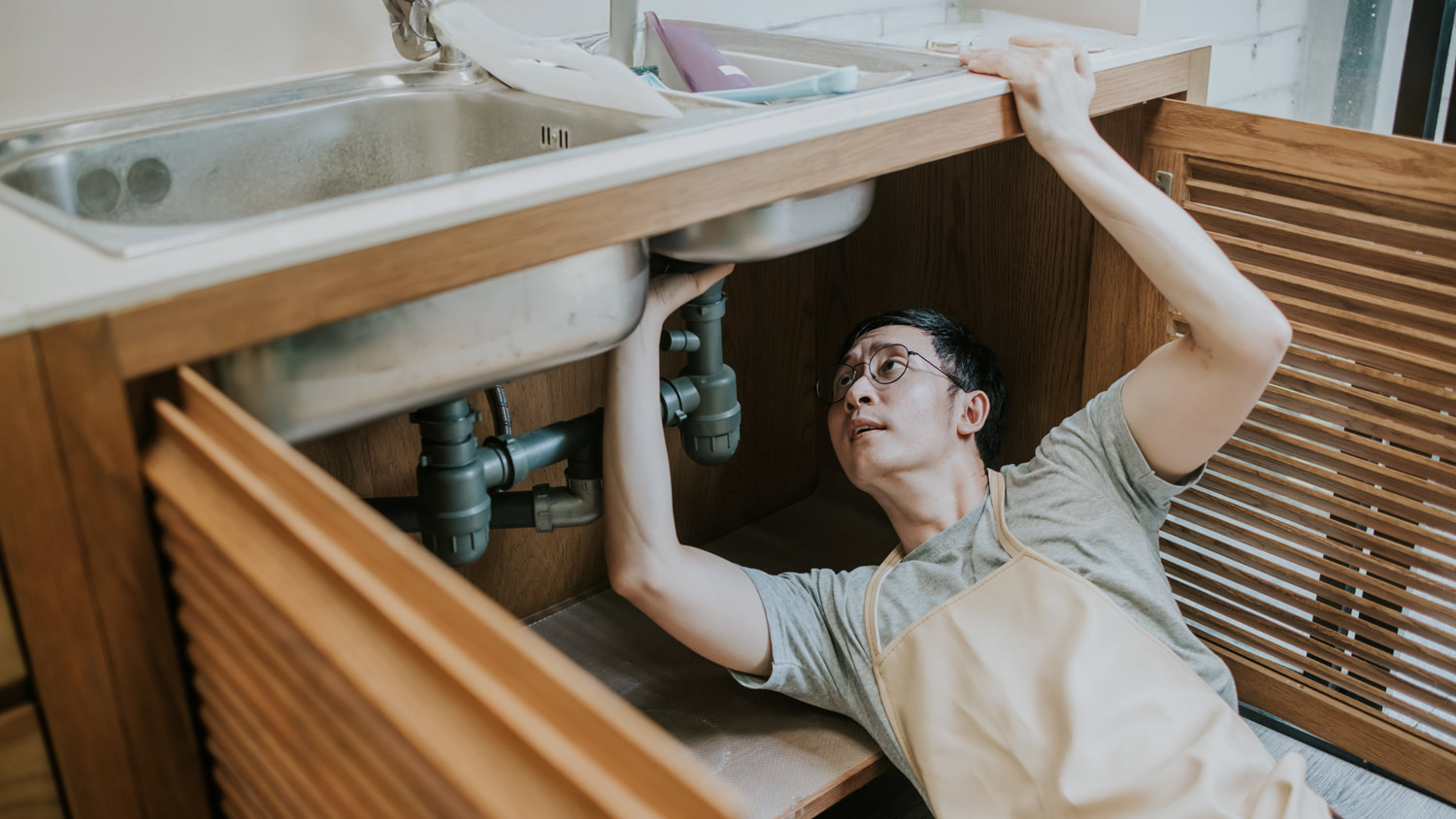
Water softener repair costs can add up, but they’re almost always worthwhile. Use this guide to see what your project is going to cost before you get started.
Say bye-bye to a poor water supply


A water softener uses ion exchange to swap hard minerals for sodium chloride.
Reverse osmosis (RO) slightly softens and thoroughly filters water with a series of filters and a membrane.
RO wastes three to six times more water than it filters.
Water softeners need regular salt refills every six to eight weeks.
RO filters need to be changed every six to 12 months.
Whenever you use water in your home—from sipping a glass of water to washing laundry—you need it to be clean and ideally not too hard from calcium and other minerals. If you do have hard water, you may consider whether a water softener system versus a reverse osmosis system is better. The answer depends on how hard your water is, your budget, and even the way you use the water. Find out which water softening option is right for you with this guide.
A water softener uses ion exchange to trade sodium chloride or potassium chloride ions for mineral ions in water to make it soft. Water softeners are popular for treating water in your entire home.
Reverse osmosis systems use several filters and a semipermeable membrane to remove a wide variety of contaminants, minerals, bacteria, and other particles from water, but they don’t soften water as much as dedicated softeners. Reverse osmosis systems are more efficient when installed at the point of use, such as at the kitchen faucet where you’ll use water for drinking and cooking.

A water softener removes minerals, such as calcium and magnesium, that make water hard. Hard water can lead to limescale buildup in your faucets, appliances, and plumbing, causing more strain on appliances and leading to more repairs. Plus, hard water can lead to dry skin and brittle hair.
| Pros | Cons |
|---|---|
| Removes hard minerals | Doesn’t filter water |
| Extends life span of appliances | Higher maintenance |
| Improves cleanliness of dishes and laundry | Higher up-front and ongoing costs |
Best for:
Very hard water (over 7.5 grains per gallon)
Everyday water usage, such as showering and washing dishes and laundry
Whole-home installation
A water softener is more effective at removing hard minerals from water than a reverse osmosis unit while also being less wasteful. While water softeners do waste some water when they flush out the hard minerals with brine, they waste far less and soften a higher volume of hard water than a reverse osmosis unit.
Because they remove hard minerals that can cause limescale buildup, a water softener is a great device to have if you want to spend less money in replacing your appliances over the years. You can save on repairs and appliance replacements in the long-term by having a water softener to counteract the effects of hard water.
Water softeners can also do away with those pesky hard water stains. Plus, hard water can do a number on your favorite sweaters, causing them to feel less soft or even appear faded, so you may notice cleaner, softer, and brighter laundry after installing a water softener.
Water softeners may be effective at softening water, but they don’t offer the extra filtration that reverse osmosis does. They can’t remove pesticides and other chemicals or bacteria from water.
Water softeners also need frequent TLC. Check your softener once per month for salt bridges in the brine tank that can clog your unit. You’ll need to add additional salt (or potassium chloride) every month or two. With this extra maintenance comes more ongoing costs compared to reverse osmosis, and costs will be much higher if you use a potassium chloride alternative to salt.

Water softeners rely on chemistry to change the mineral makeup of water, but reverse osmosis uses filters and membranes to remove a wide range of other particles in water, like bacteria, debris, pesticides, and other contaminants. This creates fresh, clean drinking water, so you can skip the plastic bottled water. While you can get a reverse osmosis system for your entire house, they are more effective and less expensive to install at one point, like the faucet you want to get your drinking water from.
| Pros | Cons |
|---|---|
| Softens and filters | Less efficient |
| Less maintenance | Creates more acidic water |
| Replaces bottled water | Removes fluoride and helpful minerals |
Best for:
Less hard water (under 7.5 grains per gallon)
Drinking water
Point-of-use installation
Reverse osmosis thoroughly filters water to provide you with pure, fresh drinking water while offering some softening benefits. The system is also surprisingly low-maintenance. The filters are long-lasting, so you only need to change them once or twice per year. The membrane can go up to five years before you need to replace it. (Always check your system’s unique specifications for filter replacement, though.)
Because reverse osmosis is so effective at removing contaminants from water, you can feel more confident in drinking water straight from the tap. Skip buying packs of bottled water and enjoy fresh, filtered water from your faucet in your favorite drinking glass or reusable bottle.
Reverse osmosis systems waste quite a bit of water—three to six times more water than they filter, on average. In some cases, they waste as much as 20 times more water.
By removing minerals, chemicals, and other particles from your water, a reverse osmosis system can also lower the pH of the water, making it more acidic. Over time, the more acidic water makes your plumbing more vulnerable to corrosion.
Because a reverse osmosis system is so effective at filtering water, it can also remove helpful things like fluoride and healthy minerals. You can counteract this by installing a point-of-use reverse osmosis unit where you get your drinking water but keeping regular water at faucets where you brush your teeth.

Both water softeners and reverse osmosis systems have plenty of benefits, but they can also come with financial and environmental costs. For the best of both worlds, consider installing a point-of-use reverse osmosis system and a water softener, which can even extend the life of your reverse osmosis unit. Either way, here are some considerations to keep in mind:
With a reverse osmosis system, you can consider different efficiency levels and whether to install a point-of-use or whole-house unit. You can also decide on how many filters you want. Most home-use reverse osmosis systems can have up to seven filters.
When choosing a water softener, you can consider a water softener versus a conditioner (also known as a salt-free water softener). You can also choose different capacities, single- or dual-tanks, and even whether to use salt or potassium chloride as the brine material. This gives you a tiny bit more flexibility than reverse osmosis systems.
A water softener costs anywhere from $200 to $6,000, depending on the capacity, household size, and water usage. Then, regular maintenance costs $5 to $70 every six to eight weeks, totaling around $35 to $610 for the year.
A reverse osmosis system costs $1,400 to $4,800 to install a whole-house system or $150 to $1,300 for a point-of-use model. Ongoing maintenance costs around $400 for the year. Every two to five years, you’ll spend $50 to $100 to replace the membrane.
Installing a point-of-use reverse osmosis system is a difficult task, but it’s easier than installing a water softener or a whole-house reverse osmosis system. However, all of these installations are best handled by a licensed pro. You could risk voiding your unit’s warranty or damaging your home’s plumbing if you attempt to DIY. Instead, hire a local water softener installer or a reverse osmosis pro to install the system you prefer.
Maintaining a reverse osmosis system requires less work than maintaining a water softener.
With a water softener, you’ll need to inspect it monthly, especially the brine tank. You’ll need to add salt every six to eight weeks to keep it running smoothly. Plus, you need to check for salt bridges, or clumps, and break them up if you see one forming.
With a reverse osmosis system, there are filters to change every six to 12 months, and that’s about it. Every two to five years, you’ll also want to replace the reverse osmosis membrane (or hire a pro to take care of it for you).
A water softener’s life span is 15 years on average, but specific units can last 10 to 25 years, depending on usage and upkeep. By comparison, a reverse osmosis system lasts 10 to 15 years. If you have both a reverse osmosis system and a water softener, you can get more life out of the reverse osmosis unit.
A water softener offers excellent ROI because it extends the life of your appliances and plumbing. It can even help a point-of-use reverse osmosis unit last longer, meaning you can use both of these systems to boost ROI and enjoy soft water and clean drinking water.
From average costs to expert advice, get all the answers you need to get your job done.

Water softener repair costs can add up, but they’re almost always worthwhile. Use this guide to see what your project is going to cost before you get started.

Your cost to install an under-sink water filter will depend on the type and size of system you choose and whether you need professional installation.

Wondering about water treatment system costs? Learn average prices, key cost factors, and ways to save on installation and maintenance for your home.

What is hard water? It contains high levels of minerals that dry skin and hair, stain dishes and clothes, and limit the life span of plumbing and appliances.

Here are the top questions about water treatment and purification systems you should ask a contractor before adding one to your home.

How does a reverse osmosis water filter work? Water passes through a semipermeable membrane to remove common contaminants, leaving clean, fresh water.